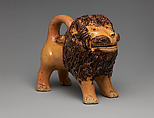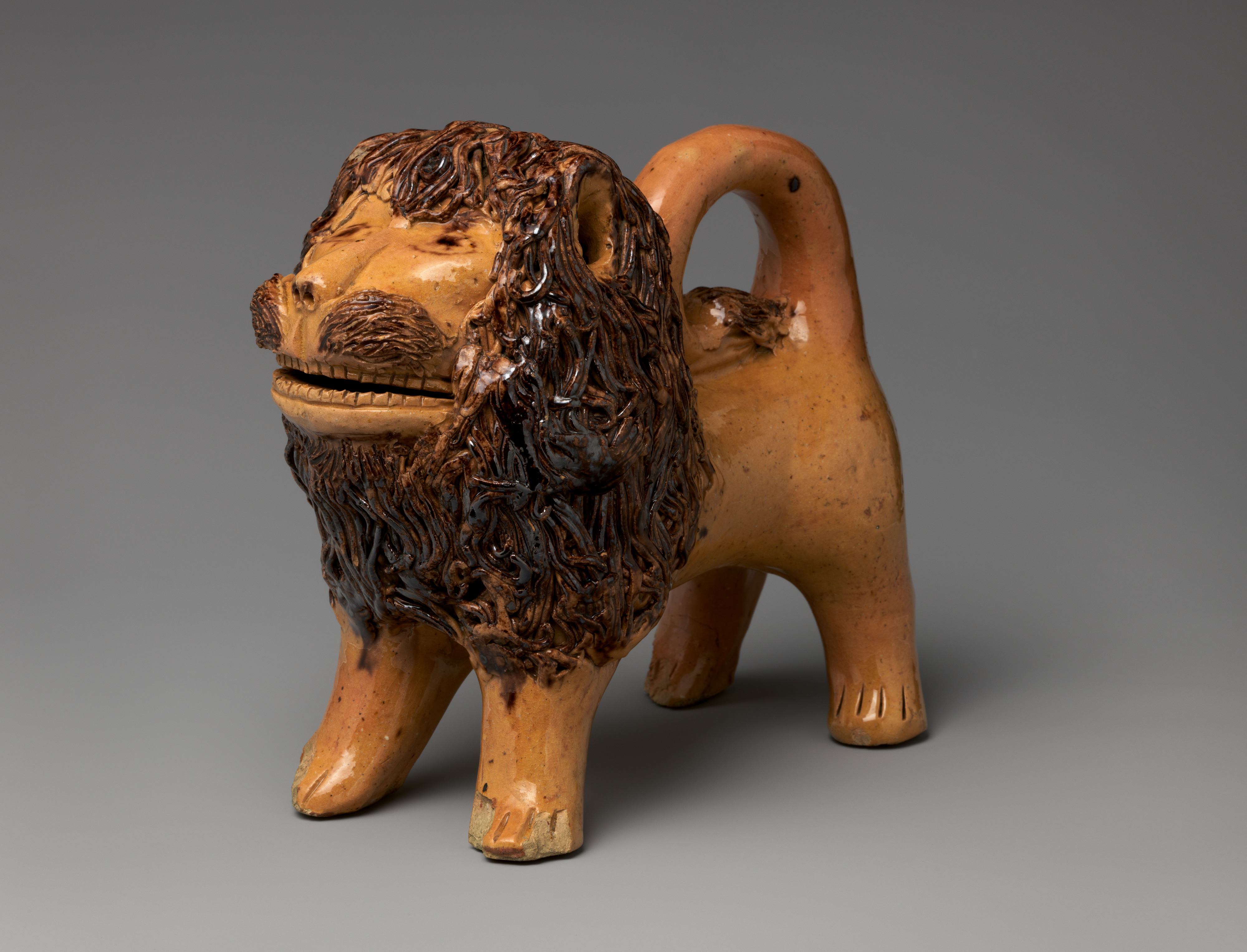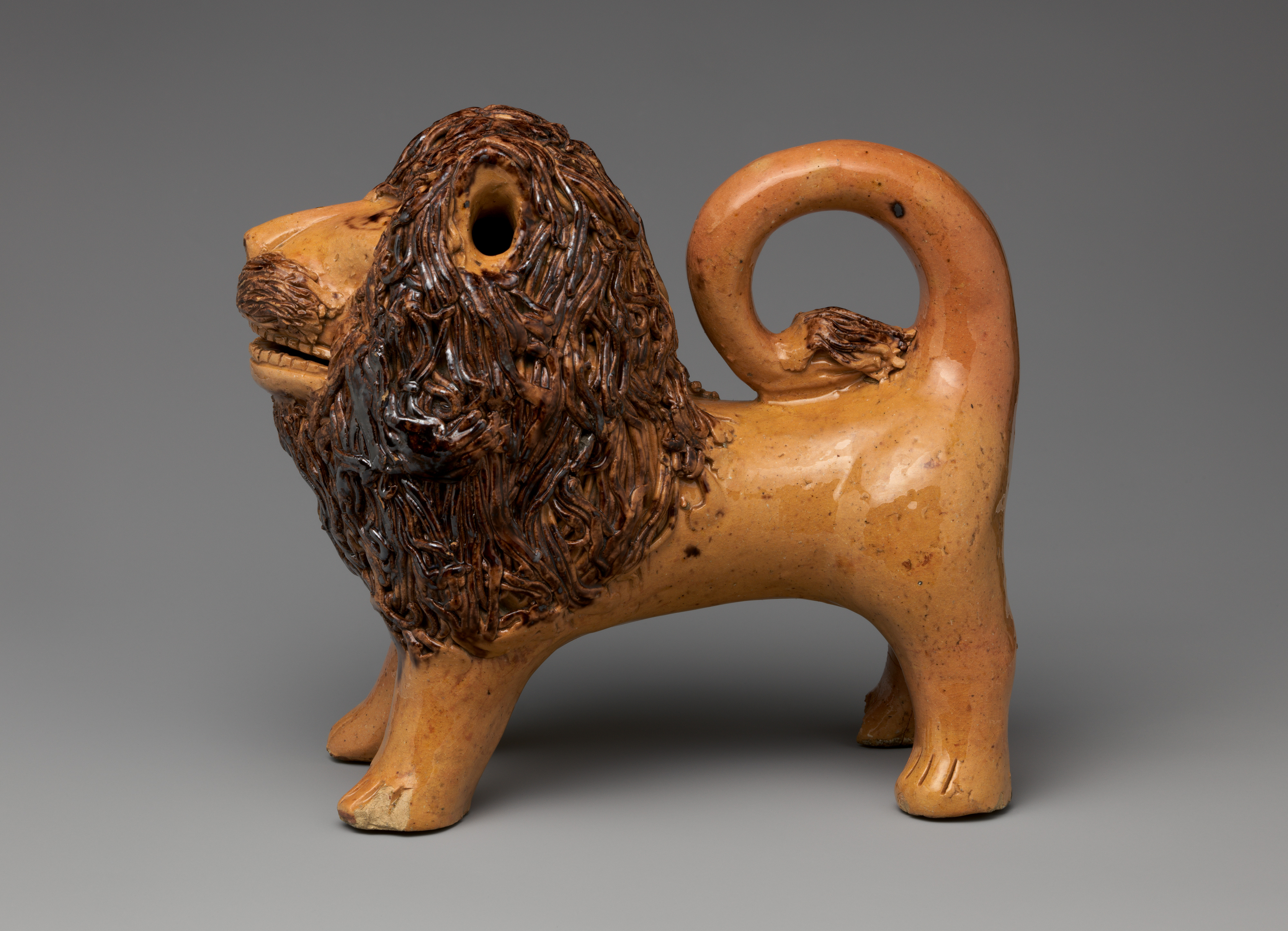Figure of a Lion
Probably John Bell American
Not on view
This figure of a lion is quite simply the icon of American folk art in clay. With its jaunty stance and naïve half-smile, it exhibits a high degree of charming playfulness and whimsy. Made by John Bell (1800–1880) of the Shenandoah Valley family of potters, this lion is one of only four earthenware examples known (and one of stoneware), all with history of ownership with members of the Bell family, suggesting that these special pieces were reserved for loved ones rather than for sale to a local market.
The Shenandoah Valley (in southern Pennsylvania, Maryland, and Virginia) was an area with abundant and rich earthenware and stoneware clay deposits, and its pottery tradition dates to at least the mid-eighteenth century. By 1833 John Bell had established a small but successful pottery business which continued to grow as his own sons (he and his wife had nine children) joined the shop. His brothers and his sons were largely responsible for disseminating the pottery tradition throughout the valley. For the most part the pottery produced utilitarian items such as crocks, pitchers, and flowerpots. However, they quickly added ornamental and "toy" wares to their repertoire, and the Bell family was well known for their earthenware glazed figures. The form of the lion was most likely responding to figural ceramic lions and poodles (this example looks part lion/part poodle) made in Staffordshire, England or the Rockingham versions at the United States Pottery Company in Bennington, Vermont, and all dating roughly to the mid-nineteenth century.
Due to rights restrictions, this image cannot be enlarged, viewed at full screen, or downloaded.
This artwork is meant to be viewed from right to left. Scroll left to view more.






